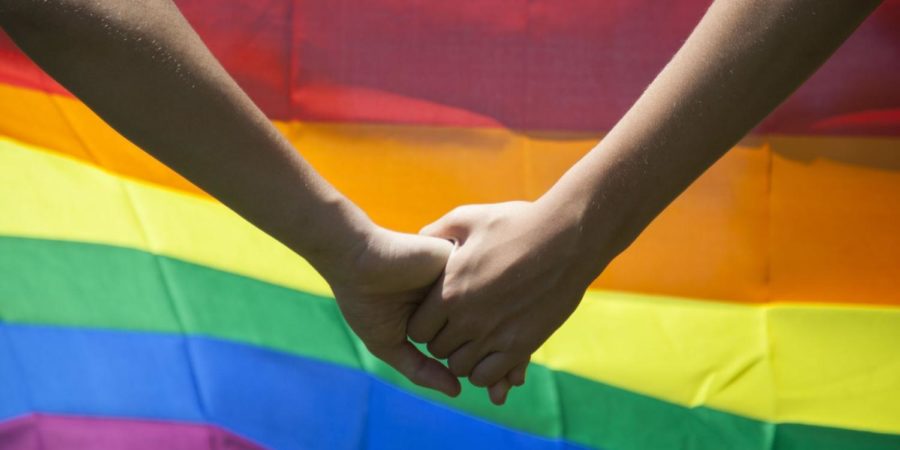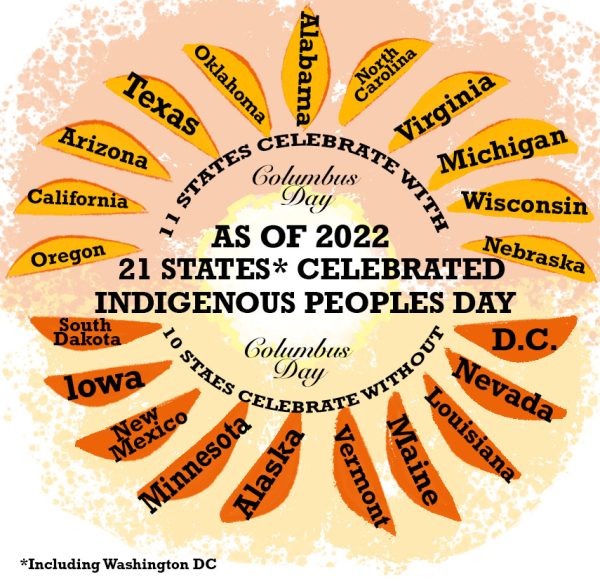LGBT History Month
October 30, 2017
Today’s members of the LGBT community enjoy the freedom to express themselves and their love for their significant others without the fear of being assaulted, arrested, or murdered. Couples of the same gender can marry one another legally, and while the progress made has been in the right direction, the struggle to get where we are now was oppressive and violent.
Stonewall’s Resistance
New York, 1969. Stonewall Inn was a safe haven for people who identified as LGBT or drag queens went to dance, party, and have a good time without feeling threatened by the normalized, societal oppression of the 1960’s.
The New York police department planned a raid on the inn on suspicion of bootlegged alcohol. While this was their reason, raids on known gay bars and gay spaces were extremely common. They stormed in the inn around 1 a.m., handcuffing patrons of the bar and arresting any man in drag. Violence came quick: bottles were thrown, people were shoved, and garbage cans were lit on fire in an attempt to force the cops out. The first day of rioting ended with 13 arrested and four injured police officers.
The second day of rioting was just as fierce. Drag queen Martha B. Johnson, a known activist, climbed up a lamp post to drop a heavy bag on the windshield of a cop car, shattering it into pieces.
The incidents that took place at Stonewall sparked one of the biggest civil rights movements and opened up debate to the rights of LGBT individuals in America, creating a long lasting conflict between American citizens.
The Ally’s Beginning
Gilbert Baker designs the first LGBT flag in 1978. Each color stands for a different meaning: pink for sexuality, red for life, orange for healing, yellow for sunlight, green for nature, light blue for magic, dark blue for serenity, and violet for spirit. Recently the black and brown stripes have been added to show solidarity between the LGBT community and LGBT people of color.
Over 100,000 people showed up for the first march for lesbian and gay rights in Washington D.C. in 1979.
The Gay Epidemic
The 1980’s AIDS epidemic in the gay community killed more than 14,000 individuals. The general public nor the medical field knew how it spread, how to treat it, or how to prevent people from panicking. Artists like Keith Haring promoted awareness about the disease but gay men seeking medical help were often isolated from any form of treatment.
President Bill Clinton initiates “Don’t Ask, Don’t Tell” policy in 1993 that prohibits openly gay and lesbian Americans from serving in the military. Clinton later signs the Defense of Marriage Act, banning federal recognition of same-sex marriage and defining marriage solely for a man and a woman.
The First Steps toward Progress
Vermont becomes the first state to legalize a union between same-sex couples in 2000. In 2003 the first legal same-sex marriage takes place in Massachusetts.
California makes same-sex marriage illegal with Proposition 8 in 2008. Proposition 8 is found unconstitutional four years later by a federal judge. “Don’t Ask, Don’t Tell” policy is repealed in 2011.
Barack Obama becomes the first president to publicly support the freedom for LGBT couple to marry. The Democratic Party becomes the first major political party to publicly support same-sex marriage.
June 27, 2015, the US Supreme Court ruled that same-sex marriage is a legal right for all Americans. Couples who have been alive since the Stonewall riots were able to get married and walk around freely as themselves. The community breathed a sigh of relief.
Where are we now?
June of 2016, Secretary of Defense Carter announced that the Pentagon lifted the ban on transgender people serving openly in the US military. Approximately a year later President Donald Trump tells the American population transgender people are no longer welcome to serve in the military.
The fight for equal rights for the LGBT community is far from over. While gay and lesbian men and women are able to legally marry each other, the US government has yet to guarantee protection from work discrimination and hate crimes. Transgender laws are virtually non-existent, and with a Republican dominated legislative branch, the effort to make progress will be grueling.



